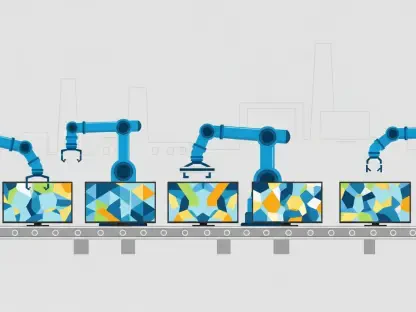Unveiling a New Frontier in Telecom Markets
In the dynamic realm of telecommunications, a staggering statistic emerges: latency in data transmission can cost financial sectors millions in missed opportunities every second. This pressing challenge has propelled hollow-core fiber (HCF), a revolutionary technology that transmits data through air rather than glass, into the spotlight. With the potential to slash latency by approximately 30% and minimize signal loss, HCF is poised to transform high-stakes industries like financial trading and data center networking. Chinese telecom operators, with their aggressive adoption and innovative deployments, are driving this market forward, setting a global benchmark. This analysis examines the current trends, market dynamics, and future projections for HCF, highlighting China’s pivotal role in shaping the industry’s trajectory.
Market Dynamics and In-Depth Analysis of Hollow-Core Fiber Trends
Technological Edge and Market Drivers
Hollow-core fiber stands as a disruptive force in the optical networking market, addressing the critical limitations of traditional solid-core fiber. Unlike conventional systems, which suffer from signal degradation and latency over long distances, HCF offers unparalleled performance by guiding light through air-filled cores. This innovation is particularly appealing for latency-sensitive applications, where even microseconds matter. Market demand is surging in sectors such as high-frequency trading and cloud computing, where Chinese operators are capitalizing on early-mover advantages. Their strategic focus on niche, high-demand areas underscores a broader trend: the telecom industry is gravitating toward specialized solutions that prioritize speed and efficiency over widespread deployment.
China’s Dominance in HCF Deployment
Chinese telecom giants are carving out a significant share of the HCF market through pioneering initiatives. China Mobile, for instance, has rolled out a landmark connection linking Shenzhen and Hong Kong, achieving a throughput of 114.9 Tbit/s with minimal loss of 0.085 dB per kilometer. This deployment, while experimental in nature due to the technology’s early stage, targets cross-border financial transactions, showcasing HCF’s practical value. Collaborations with leading vendors like Huawei and ZTE further amplify China’s market position, driving innovation in application development. However, high production costs and technical complexities remain barriers, suggesting that market expansion will hinge on overcoming these economic challenges in the near term.
Comparative Global Market Perspectives
While China leads with bold deployments, the global HCF market presents a mixed landscape. Major players like Microsoft have integrated HCF into data center networks, achieving reliable low-latency connections over metro distances exceeding 20 kilometers. This success contrasts with slower progress in other regions, where trials have often stalled due to limited use cases beyond data centers. China’s state-backed operators benefit from substantial funding and aligned strategies, positioning them ahead of fragmented international efforts. Market analysis indicates that while global adoption remains cautious, China’s proactive stance could catalyze broader interest, potentially reshaping competitive dynamics over the next few years.
Economic and Regulatory Challenges Impacting Growth
The HCF market faces significant headwinds that could temper its growth trajectory. Production costs remain prohibitively high, limiting scalability beyond niche applications, while the absence of standardized protocols hinders interoperability and industry-wide adoption. Regulatory frameworks, critical for ensuring consistent deployment, are still evolving, creating uncertainty for investors and operators alike. In China, despite robust government support, these economic and regulatory hurdles mirror global concerns, suggesting that market maturation will require collaborative efforts to establish cost-effective manufacturing and unified standards. Projections indicate that without such advancements, HCF may remain a specialized solution through at least 2027.
Future Projections and Market Opportunities
Looking ahead, the HCF market is expected to evolve gradually, with Chinese operators likely to maintain their leadership through sustained investment and trials. Forecasts suggest that technological breakthroughs in cost reduction and long-haul transmission capabilities could expand HCF’s applicability by the end of this decade. Opportunities abound in emerging sectors like autonomous systems and real-time analytics, where ultra-low latency could unlock new revenue streams. However, market analysts caution that widespread adoption will depend on balancing innovation with affordability, a challenge that could define the competitive landscape. China’s role as a testing ground for HCF applications may inspire global players to accelerate their own strategies, potentially narrowing the adoption gap.
Reflecting on Market Insights and Strategic Pathways
Looking back, the analysis of hollow-core fiber’s market trajectory reveals China’s telecom operators as frontrunners, leveraging early deployments to gain a competitive edge. Their initiatives, coupled with global efforts like Microsoft’s data center integrations, underscore HCF’s transformative potential despite economic and regulatory constraints. For industry stakeholders, the path forward involves strategic investments in pilot projects to refine the technology’s scalability. Forming partnerships with innovative vendors offers a way to mitigate costs, while advocating for standardized protocols emerges as a critical step to ensure market readiness. These actions, taken in response to the identified challenges, pave the way for harnessing HCF’s capabilities, setting the stage for a redefined telecom landscape in the years that follow.









